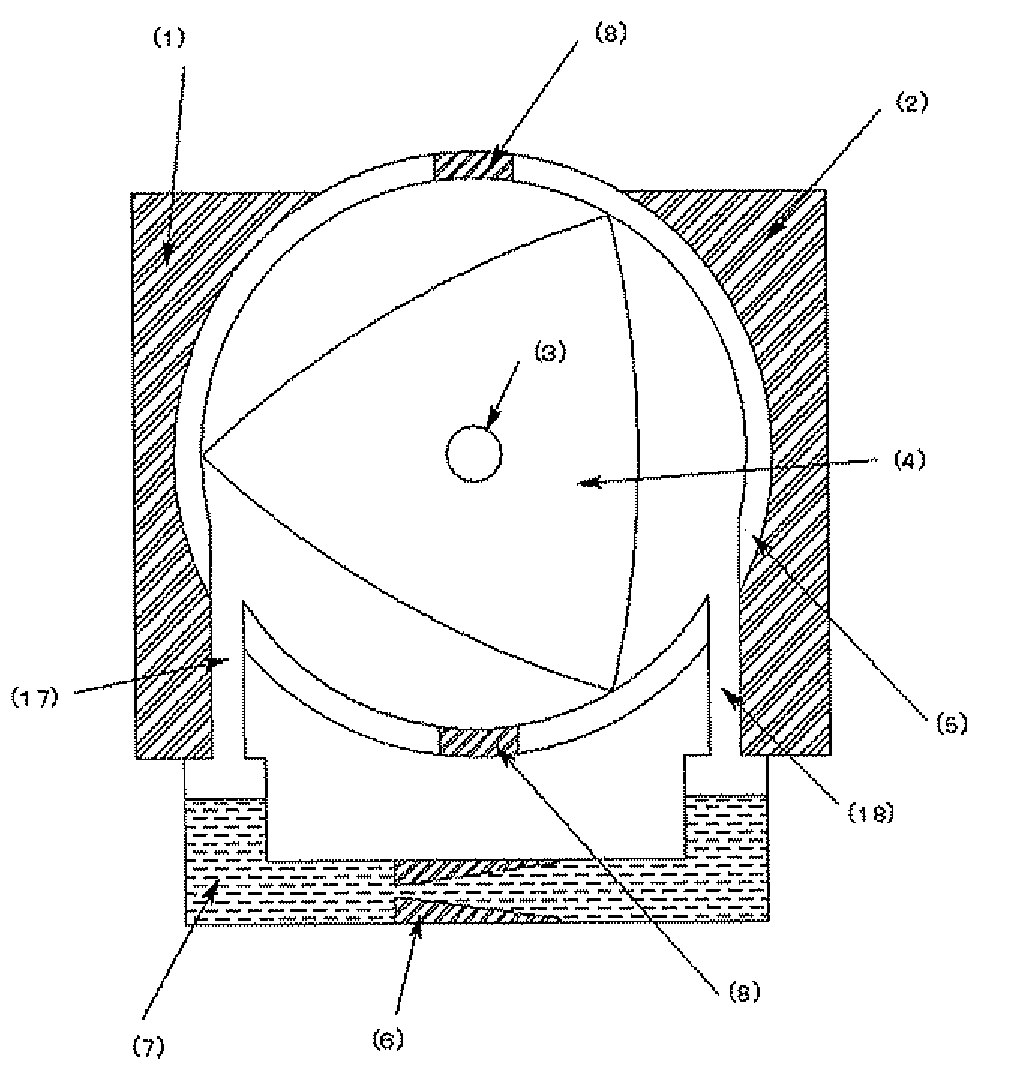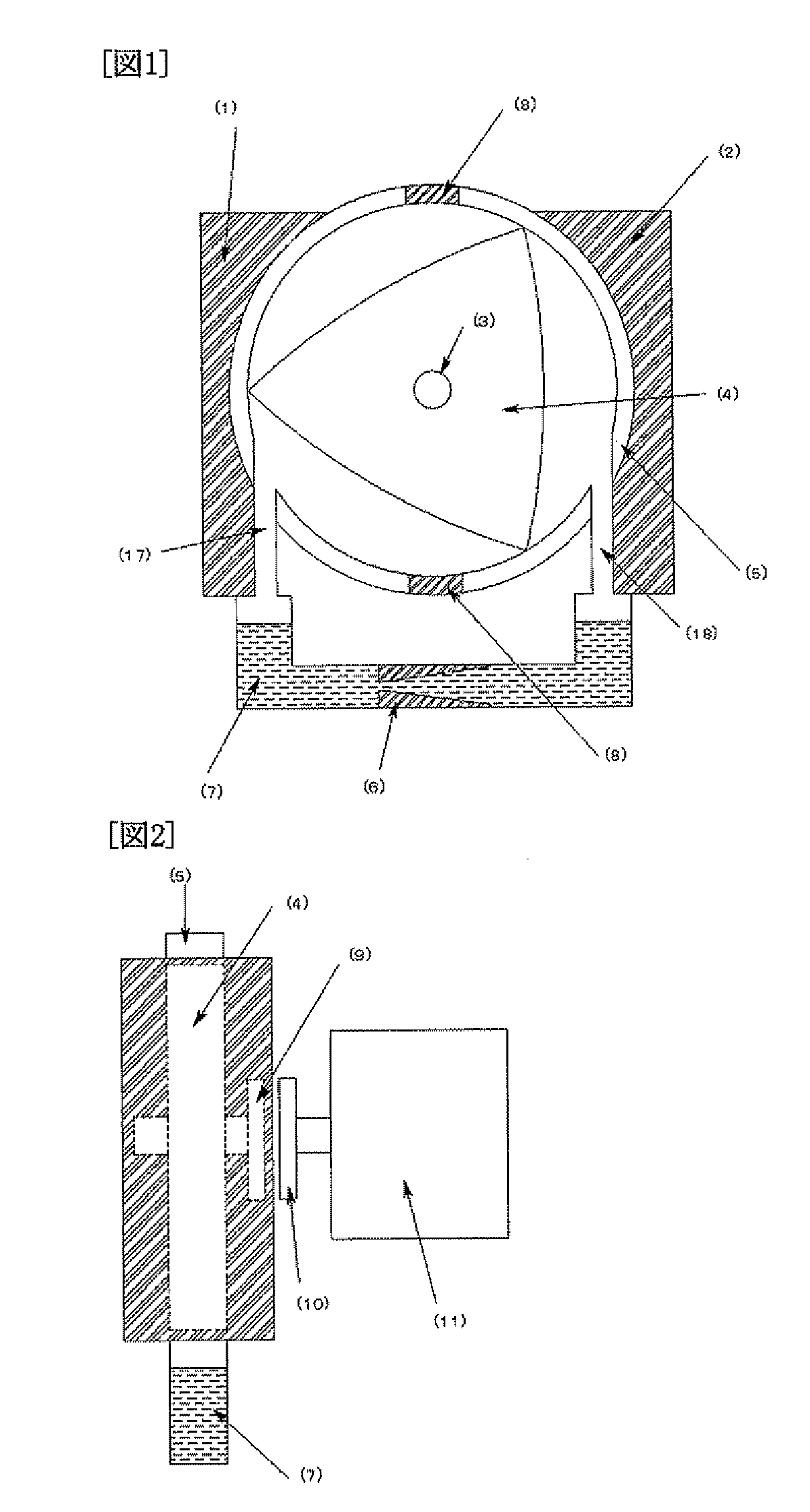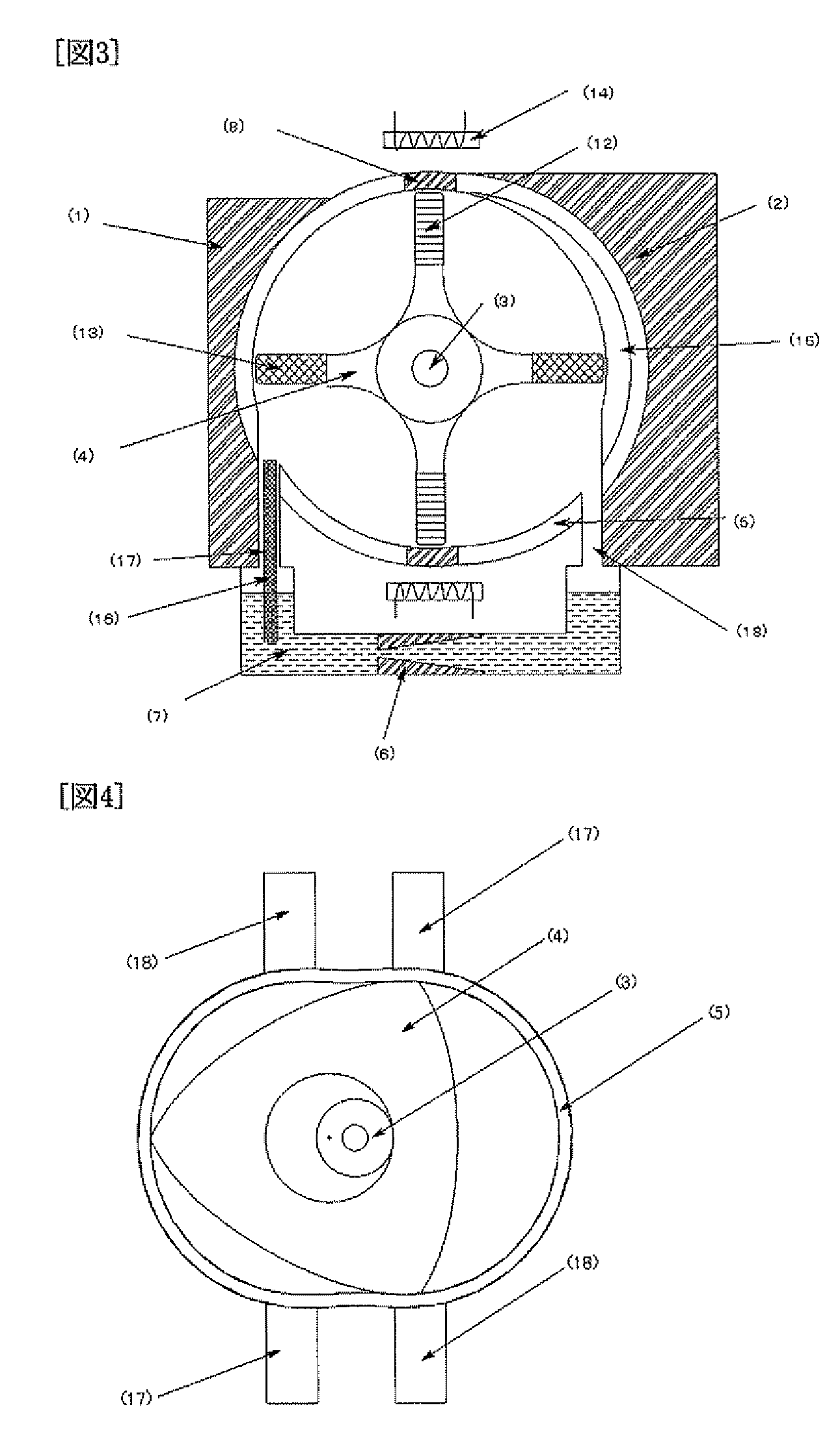Rotary heat engine
a heat engine and rotary technology, applied in the field of heat engines, can solve the problems of large temperature differential, disadvantageous mechanical efficiency of types, etc., and achieve the effect of reducing mechanical energy loss, prolonging engine service life, and improving reliability
- Summary
- Abstract
- Description
- Claims
- Application Information
AI Technical Summary
Benefits of technology
Problems solved by technology
Method used
Image
Examples
first embodiment
[0027]FIG. 1 shows schematically the structure of a rotary heat engine according the present invention. Referring to FIG. 1, the rotary heat engine comprises a cylinder (5) and a rotor (4) having generally triangular shape rotatably housed within the cylinder. A heat receiving section (1) and a heat discharging section (2) are disposed on the opposite sides of the cylinder integrally with or in thermal contact with the cylinder wall. The cylinder wall is circumferentially interrupted, at least in two zones, by a wall section made of heat insulating material (8) between the heat receiving section side and the heat receiving section side to thermally insulate between them. The rotor (4) is generally trianglar in shape in this embodiment. However, any rotor having other shapes such as a cross shape or having a curved face may also be used provided the rotor defines a plurality of spaces within which the gasified working fluid can be confined.
[0028]The engine also comprises a path for c...
third embodiment
[0035]According to the present invention, the vaporization or gasifying of the working fluid staying in the reservoir section is accelerated with a bundle of capillary tubes (16) by the capillary attraction and the fluid contacting surface area of the cylinder inner wall in the heat discharging region is enlarged for improving the heat exchange efficiency. The above configurations contribute, in combination, to the provision of a rotary heat engine having a very high heat efficiency since a large volume change of the gasified working fluid is achieved even with a heat input stream having a relatively low temperature. Moreover, the electric power generation system including the above rotary heat engine in itself eliminates possible energy loss significantly resulting in a highly efficient electric power generating system. As a result, a nearly ideal stirling cycle may be attained by this embodiment.
fourth embodiment
[0036]FIG. 4 is an illustrative view of the rotary heat engine according the present invention showing schematically part of the internal structure of the engine having two sets of the working fluid inlet (17) and outlet (18) for conveying the working fluid to and from the cylinder (5). In this embodiment, the rotor (4) is generally triangular in shape and defines a circular opening concentrically. The periphery edge defining the central opening is toothed internally and the rotational shaft (3) rotatably carried between cylinder side walls is also toothed externally (not shown). The rotation of rotor (4) in the cylinder (5) is thus transmitted to the rotatable shaft (3) by the meshed engagement between the rotor (4) and the shaft (3). The rotary heat engine of this embodiment includes two sets or pairs of the working fluid inlet channel (17) and outlet channel (18) located opposite sides of cylinder. However, the inlet path (17) of the first set is juxtaposed with the outlet path (...
PUM
 Login to View More
Login to View More Abstract
Description
Claims
Application Information
 Login to View More
Login to View More - R&D
- Intellectual Property
- Life Sciences
- Materials
- Tech Scout
- Unparalleled Data Quality
- Higher Quality Content
- 60% Fewer Hallucinations
Browse by: Latest US Patents, China's latest patents, Technical Efficacy Thesaurus, Application Domain, Technology Topic, Popular Technical Reports.
© 2025 PatSnap. All rights reserved.Legal|Privacy policy|Modern Slavery Act Transparency Statement|Sitemap|About US| Contact US: help@patsnap.com



